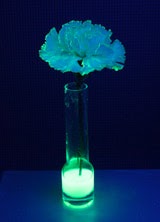What gives the blue in Blue Jeans..???
What gives the blue in Blue Jeans..???
Jeans are stylish. Jeans are cool. And jeans are mostly blue.
It’s quite interesting. The blue colour of jeans is because of the indigo dye that is used in the manufacturing of the jeans.
Indigo is both a natural dye and a synthetic one. Indigo plants were originally harvested so that the dye of the plant could be extracted. Beyer however, was able to chemically synthesize Indigo. This lead to manufacturing Indigo on a large scale in 1897.
So, if you like your blue jeans very much, you must thank Alfred Von Baeyer.
Take a look at your jeans under a magnifying glass, and you will see there are white specs of fibres in your jeans. That’s because the structure of indigo prevents it from mixing completely with denim fibres. And that’s why you get the characteristic individual fibre patterns in the denim weave.
Jeans are stylish. Jeans are cool. And jeans are mostly blue.
It’s quite interesting. The blue colour of jeans is because of the indigo dye that is used in the manufacturing of the jeans.
What has Alfred Von Baeyer got to do with your jeans?
German chemist Alfred Von Baeyer was the first person to invent synthetic indigo dye. In fact, he even won a Nobel Prize for this in 1905.Indigo is both a natural dye and a synthetic one. Indigo plants were originally harvested so that the dye of the plant could be extracted. Beyer however, was able to chemically synthesize Indigo. This lead to manufacturing Indigo on a large scale in 1897.
So, if you like your blue jeans very much, you must thank Alfred Von Baeyer.
How is Indigo dye used to colour?
3 to 12 gms of indigo are enough to dye a pair of jeans.
Adding Sodium Hydroxide and Sodium Hydrosulphite to Indigo reduces it to its colourless form. This is then applied to the fabric. The dye easily adheres to the cotton denim fabric, fading slightly over time. When the dyed jeans is left to dry, the dye comes in contact with air and oxidization takes place. And because of this process, the dye changes colour to blue. It takes around 3 to 12 gms of indigo to dye a pair of jeans.And the fine, white specs in the jeans?
Take a look at your jeans under a magnifying glass, and you will see there are white specs of fibres in your jeans. That’s because the structure of indigo prevents it from mixing completely with denim fibres. And that’s why you get the characteristic individual fibre patterns in the denim weave.



Comments
Post a Comment